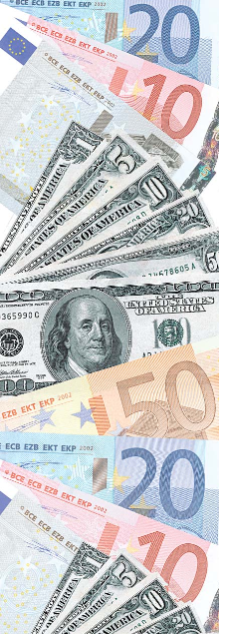


Throughout
much
of
the
post-World
War
II
period,
agricultural
policy
in
the
U.S.
and
European
Union
(EU)
has
focused
on
supporting
farm
income
primarily
through
price
supports.
Both
countries
supported
commodity
prices
through
pur-
chase
and
storage
of
surplus
commodities.
The
U.S.
relied
more
on
producer
loans
secured
by
commodities
and
acreage
con-
trols,
while
the
EU
relied
more
on
export
subsidies
to
dispose
of
surpluses.
Both
the
U.S.
and
the
EU
have
significantly
changed
their
commodity
policies
in
the
past
decade.
While
their
policies
have
evolved
in
similar
directions
in
some
respects,
important
differences
remain.
Both
the
U.S.
and
the
EU
have
reduced
their
reliance
on
price
support
for
several
commodities
for
the
same
reasons:
to
improve
their
competitiveness,
reduce
burdensome
stocks
associated
with
high
support
prices,
and
rein
in
rising
costs
of
operating
commodity
programs.
Both
countries
now
make
greater
use
of
income
support
through
payments
to
producers.
Lower
support
prices
and
govern-
ment
purchases
have
reduced
the
need
for
surplus
disposal,
including
export
subsidies.
Since
1995,
U.S.
use
of
export
subsidies
has
been
limited
essentially
to
dairy
products
and
poultry.
The
EU
con-
tinues
to
use
export
subsidies
for
many
price-supported
commodities,
although
World
Trade
Organization
(WTO)
obliga-
tions
have
required
the
EU
to
reduce
subsidy
levels.
Despite
similarities
in
policy
changes,
EU
and
U.S.
policies
differ.
The
EU
main-
tains
a
higher
overall
support
level
to
its
farm
sector
and
relies
more
on
price
sup-
port
than
does
the
United
States.
Although
some
EU
support
prices
have
been
reduced,
higher
tariffs
contribute
to
market
price
support
by
pre-
venting
the
entry
of
lower
priced
imports.
Both
U.S.
and
EU
agricultural
policies
will
continue
to
respond
to
domestic
needs,
the
interna-
tional
environment,
and
obligations
under
trade
agreements.
In
addition,
public
pres-
sure
on
broader
issues,
including
envi-
ronmental
protection,
rural
development,
and
food
safety,
is
increasingly
shaping
agricultural
policy.
Mary
Anne
Normile
,
This
finding
is
drawn
from
.
.
.
ERS
Briefing
Room
on
Farm
and
Commodity
Policy:
www.ers.usda.gov/Briefing/FarmPolicy
ERS
Briefing
Room
on
the
European
Union:
www.ers.usda.gov/Briefing/EuropeanUnion
W
W
W.
E
R
S
.
U
S
D
A
.
G
OV
/
A
M
B
E
R
WAV
E
S
F
I
N
D
I
N
G
S
M
A
R
K
E
T
S
A
N
D
T
R
A
D
E
Are
U.S.
and
European
Union
Agricultural
Policies
Becoming
More
Similar?
Percent
1989-91
1999-01
1989-91
1999-01
Source:
Producer
support
estimates,
as
reported
in
Agricultural
Policies
in
OECD
Countries:
Monitoring
and
Evaluation,
2002,
Organization
for
Economic
Coo
peration
and
Development.
Income
support
(producer
payments)
Market
price
support
U.S.
and
EU
shift
toward
income
support
U.S.
EU
100
80
60
40
20
0
PhotoSpin